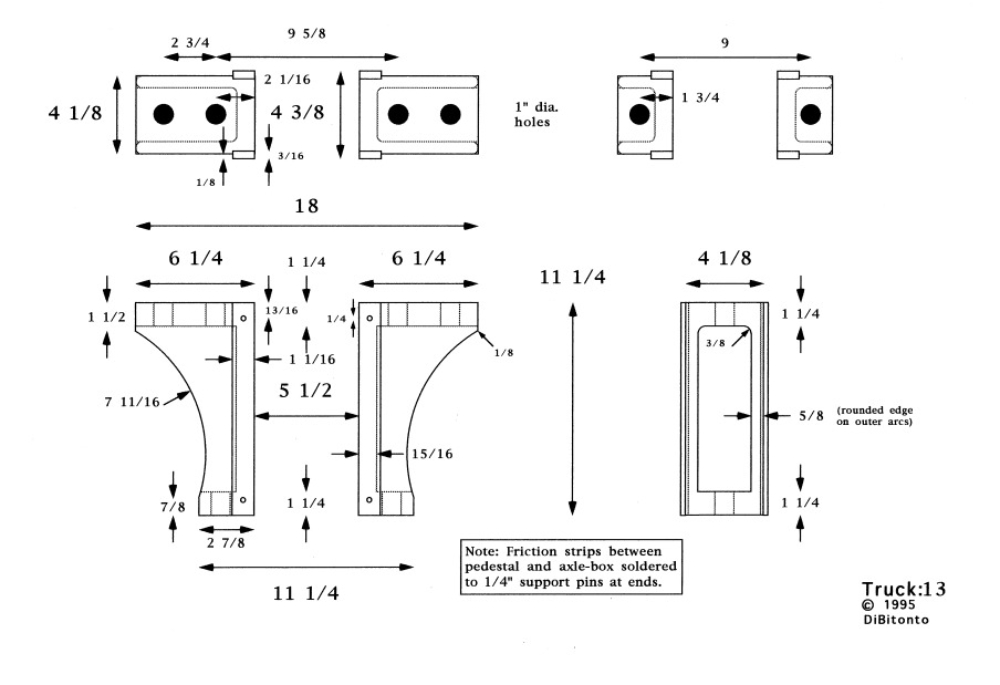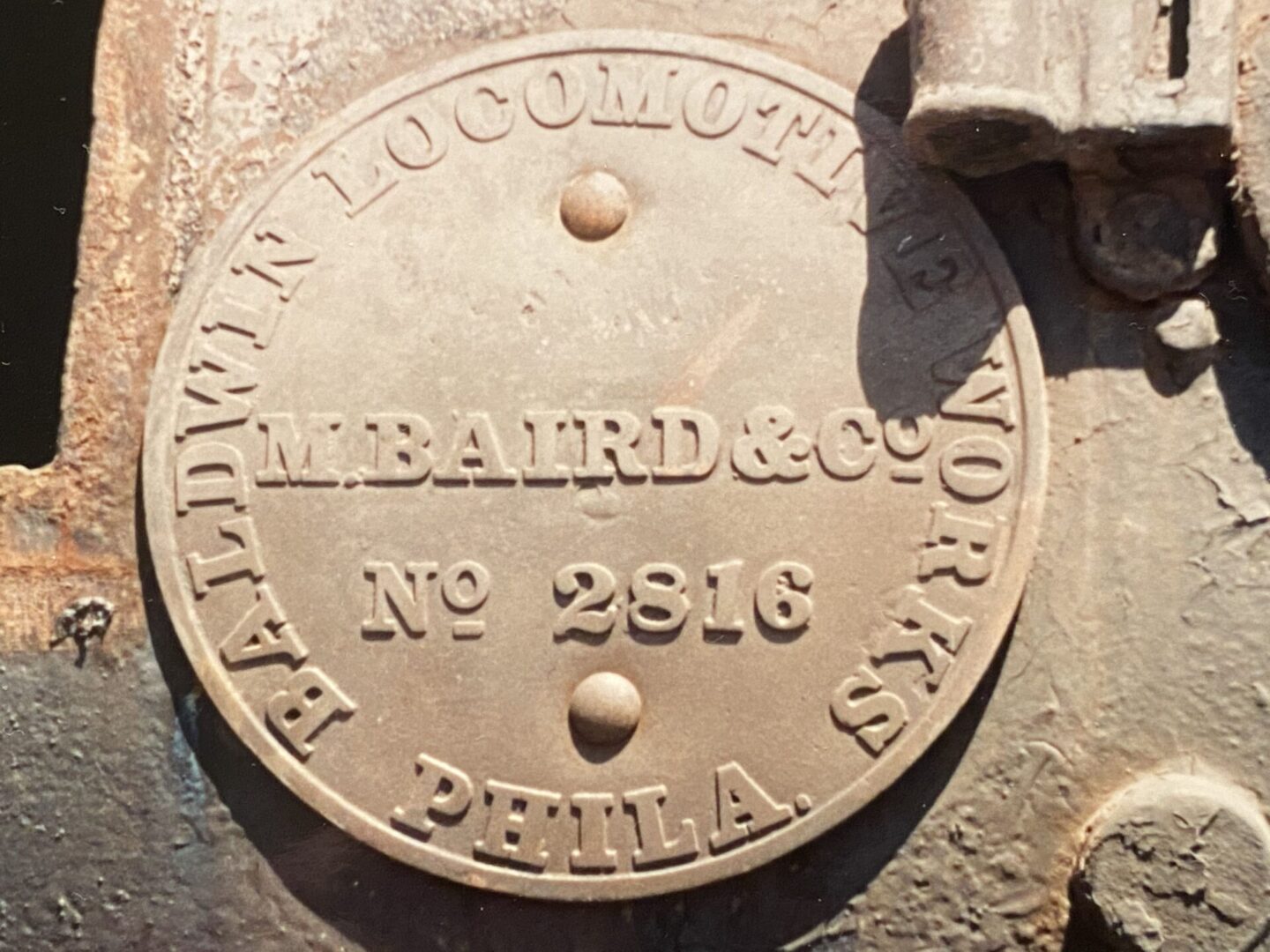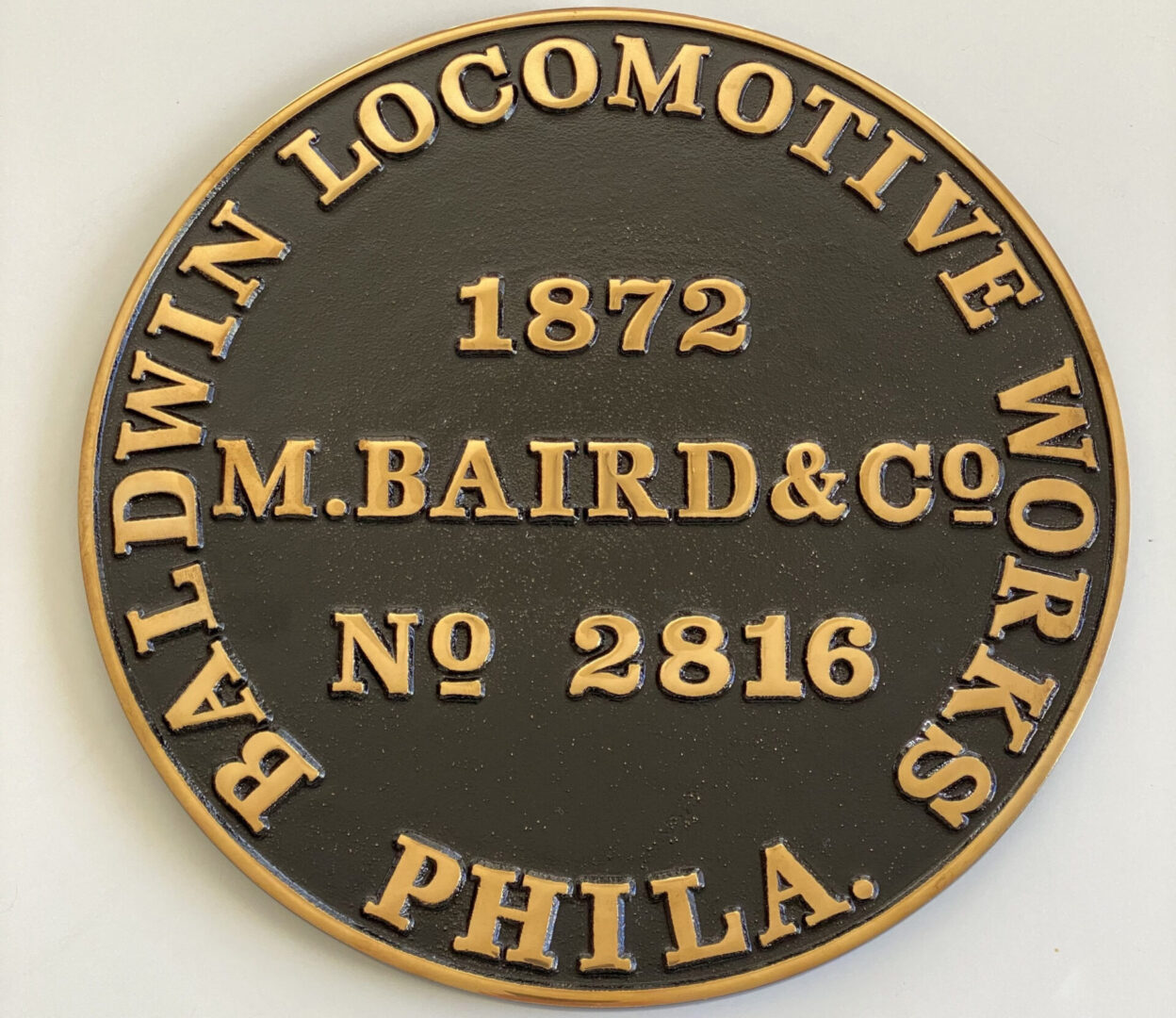
Replica Builder Plate for the Reno made by V&T Enterprises.
As with most Baldwin builder plates, the manufacture date always appears along with the BLW name, city of origin (Phila.) and serial number. The Reno was no exception, and its original builder plate came with its 1872 date. Sometime during the early 20th century prior to a locomotive inspection by the Interstate Commerce Commission (ICC), the V&T chiseled off this date fearing the locomotive would not be federally certified due to its age. Well the Reno did pass its ICC inspection after all and went on to operate until 1978 at Old Tucson Studios, when its boiler was no longer deemed safe by the state of Arizona - after more than 100 years of operation!
Using an on-site tracing of the left builder plate (engineer’s side), a digital image of the lettering and border was first generated on a CAD system. The digital file was then sent to Dent Manufacturing, Inc. in Northampton, PA where a sand-casting pattern was made which also included all necessary gating. Bronze alloy C90500 was used to cast two flat replica builder plates that now show the original 1872 builder date. Note: to fit on the side of the 46 inch outer diameter boiler, the builder plate would have to be drilled and cylindrically contoured, either with a special plate bender or just hammered by hand like the original ones at the Baldwin Locomotive Works.
For drawing specifications of the replica builder plate, please contact V&T Enterprises at: [email protected]
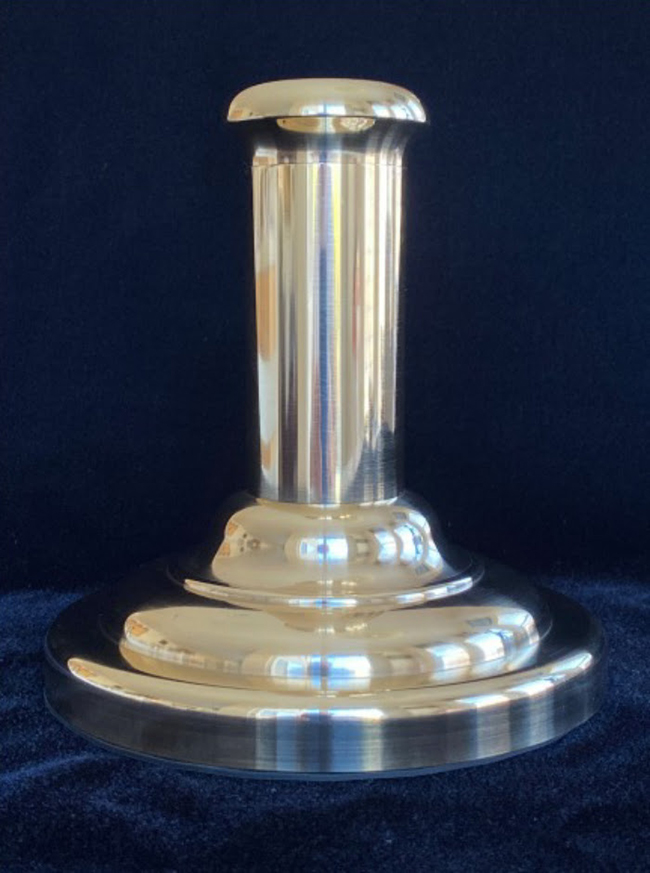
Pilot flag fixture replica by V&T Enterprises.
Pilot flag fixtures were common appliances on many late 19th-century locomotives ordered by the Virginia & Truckee Rail Road and others. As the name implies, prominent brass fixtures mounted on each end of the wooden pilot held signaling flags vital to the operation of the railroad, as well as decorative celebratory flags. A comparison of surviving artifacts on four V&T locomotives, the Genoa (1873), Empire (1873), Tahoe (1875), and Inyo (1875), shows these pilot flag fixtures are essentially the same and suggests the original Baldwin design and fabrication technology was unchanged during this same time period. (Current pilot flag fixtures on the Inyo do not appear to be Baldwin originals.) Moreover, the earliest known photographic record of the Reno (1872) by Carleton Watkins in 1878 clearly shows the same Baldwin flag fixture design and shape on the pilot. Unfortunately, the pilot flag fixtures on the Reno were reported missing sometime after the devastating fire at Old Tucson Studios in 1995 and are still unaccounted for to this day.
Two replica pilot flag fixtures were fabricated with identical exterior geometries as on the Genoa by ARRC North America in Carlsbad, CA. Starting with 2-D DXF line images, 3-D CAD images were then generated and verified against the same survey parameters from the original artifact. Both replicas were fabricated using more cost-effective CNC machining rather than historically accurate casting technology. For large-scale industrial fabrication, Baldwin, in fact, used casting because it was actually more cost-effective compared to traditional machining from solid metal stock. Regardless, the overall aesthetic appearance of these replicas is stunningly beautiful and recalls a period in late 19th-century American railroad technology when hand craftsmanship, not automation, was celebrated in functional yet artistically graceful components such as these.
For inquiries regarding the pilot flag fixtures, please contact V&T Enterprises at: [email protected].
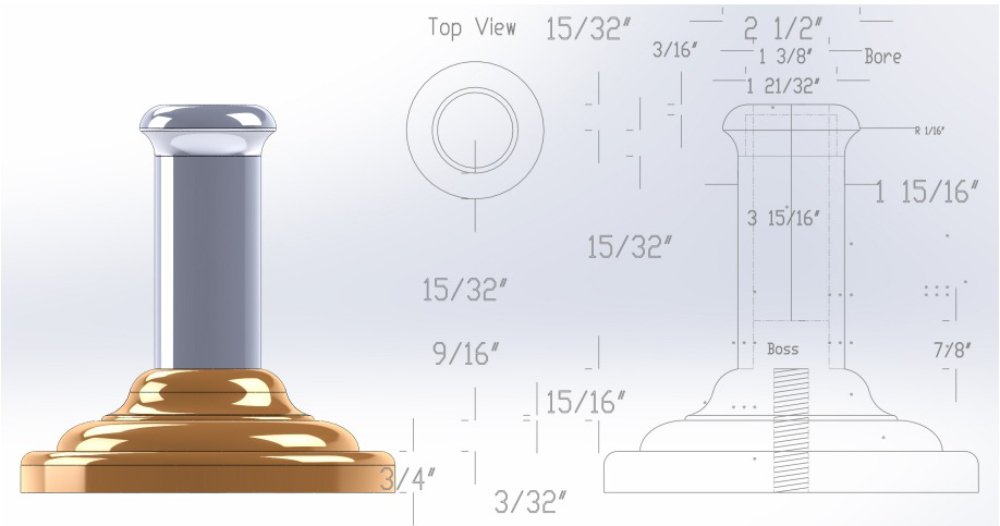
Pilot flag fixture specifications and 3-D CAD image for the Reno by V&T Enterprises.
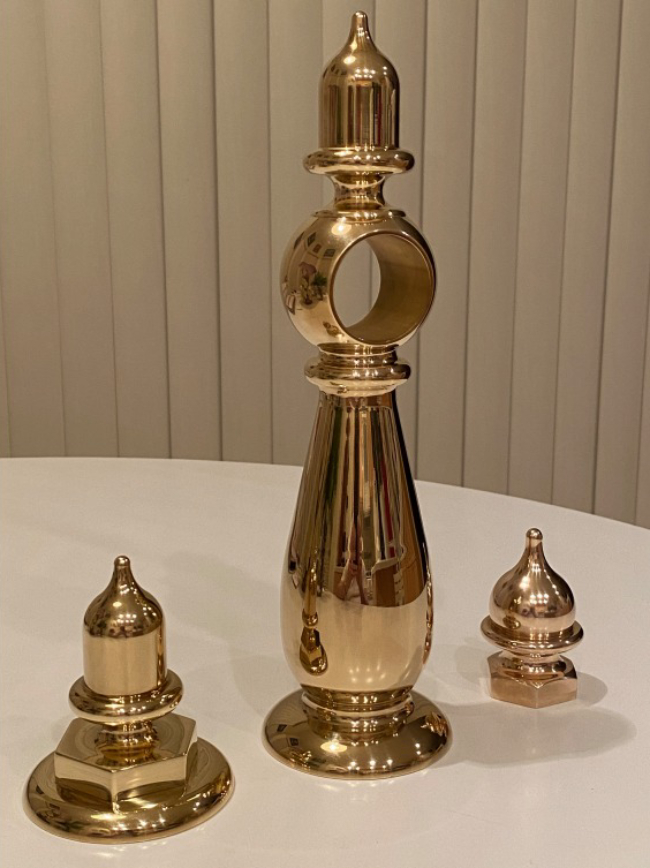
Handrail stanchion and finial replicas by V&T Enterprises.
The design origin of many decorative hardware pieces on the Reno can be traced back to the 1871 Baldwin Erection Drawing No. 20. Reeded acorn finials adorned the whistle, sand, and steam domes and bell on top of the boiler. This same style continued along the handrail stanchions, ends, and headlight platform bar and on the ends of the driver fenders and piston covers. With the exception of functional oilers, bell stanchions, and tallow pots on the steam chests, which were made of bronze, all other decorative hardware was made and maintained in highly polished bright yellow brass.
Starting from the drawing specifications for the handrail stanchion and finial, a digitized file in DXF format was prepared for CNC fabrication. These pieces were fabricated in Elkhart, Indiana, by DAKA Manufacturing, Inc., and polished at the same facility. (At one time, DAKA supplied specialty polished metal components for American LaFrance.)
For inquiries regarding the stanchion and finial, please contact V&T Enterprises at: [email protected].
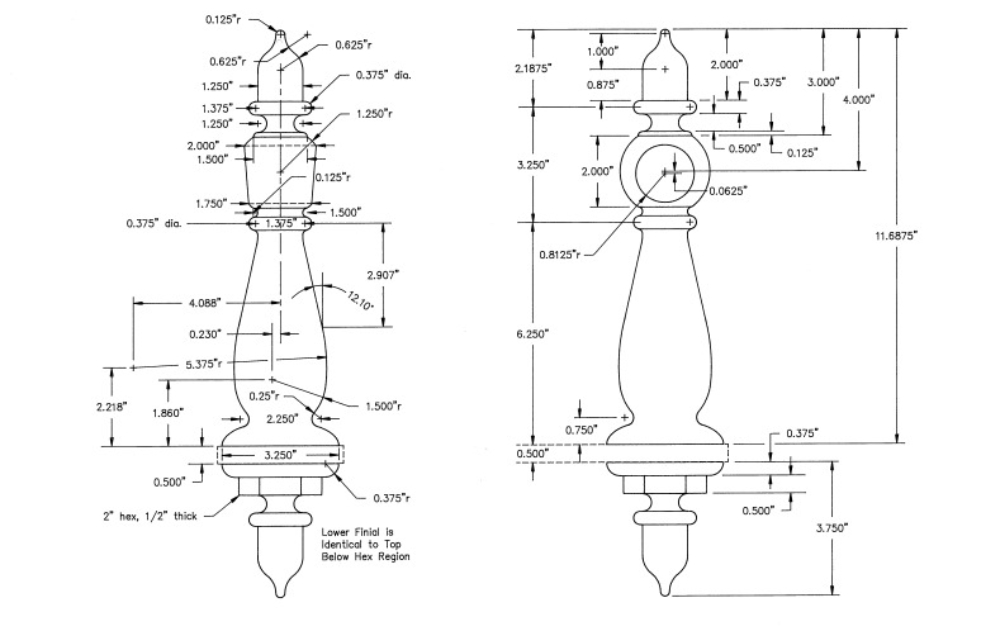
Handrail stanchion and final specifications for the Reno by V&T Enterprises.
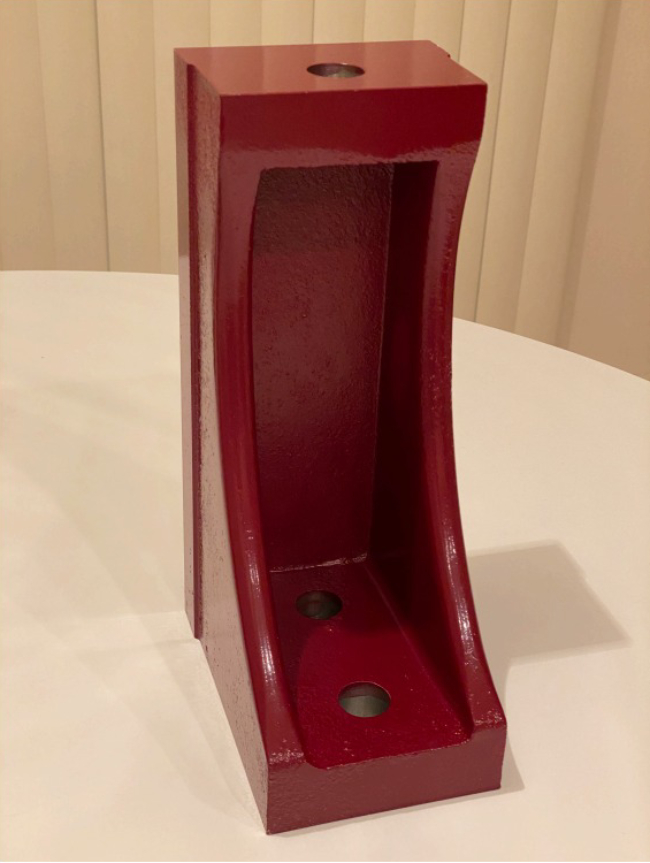
Tender truck pedestal replica by V&T Enterprises.
Pedestal replicas for Reno’s tender trucks were fabricated in 10-70 high carbon steel by Horizon Metals in Nephi, Utah. The raw castings were then machined for bolt holes and planed flat along the top, bottom, and side surfaces to ensure an even fit for their journal box. The sand casting pattern was fabricated according to the pedestal measurements and specifications and included compensation for alloy shrinkage. Each finished pedestal weighs 28.4 pounds.
All 16 pedestals were cleaned and coated with a white metal primer. The final color coat applied was guided by the original 1872 Baldwin painting specifications for the Reno: best Passenger. This paint scheme includes a background color referenced by Baldwin as Wine. Since no original sample or specification exists, a reasonable approach was to use the same research-based paint scheme on the UP 119 locomotive replica at the Golden Spike National Historic Site in Utah. Specifically, the tender of the UP 119 is painted a deep ruby color, which indeed looks like a glass of wine. The corresponding Pantone Management System (PMS) color code for this hue is Pantone 7421 C: Pantone Rubine 75.00, Pantone Yellow 8.00, and Pantone Black 17.00.
For inquiries regarding these pedestals, please contact V&T Enterprises at the following address: [email protected].

